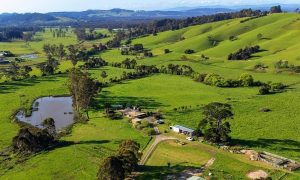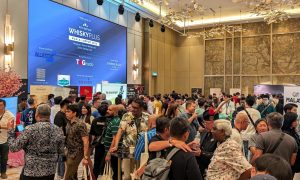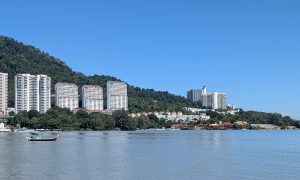Revenge, Conquest and a Murder Plot: Learn More About Melaka’s Turbulent History

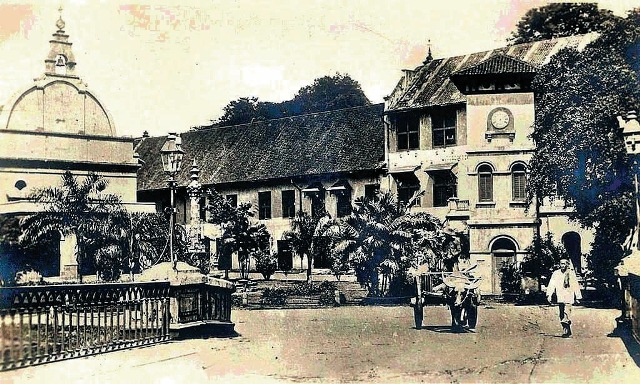
A strategic port. A fortified hilltop. A coveted prize for sultanates and empires alike. Join Melaka Historian Dennis De Witt as he peers into the past of this Malaysian port city and shares a fascinating and turbulent history that has lent itself to Melaka’s unofficial title as the country’s historical capital.
Located about a two hours’ drive south from Kuala Lumpur, or roughly three hours north from Johor Bahru, is the historic city of Malacca. Also known as Melaka in contemporary Malay spelling, the city can lay claim as “the place where it all began” for Malaysia. Visitors to Malacca are able to discover an all-in one account of Malaysia’s past that begins with the early Royal Malay Empire, to the coming of the European colonials, up to the independence of the nation – a fascinating story spanning six centuries of its rich history.
See Also: 5 Fabulous Buildings in Melaka You Must Visit
The old part of the historical city centre consists of a labyrinth of narrow streets aligned with old buildings that seems to be partly colonial and partly Asian influenced. Malacca’s architectural impressions reflect its multi-layered past and reveal a rich potpourri of cultures. It was due to its unique history and culture that Malacca was listed as a UNESCO World Heritage Site since 2008. The history of this city has seen it changing hands a number of times over the last 600 years, and we must go back to that initial point to get a sense of the depth of Malacca’s true heritage.
An Enviable Port, A Foiled Plan
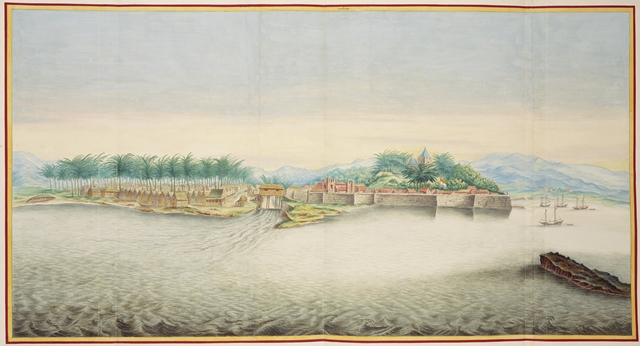
The story goes that Malacca was first founded by Parameswara who fled the ancient kingdom of Majapahit and eventually found himself at a place which presented itself as a good port, one that was strategically located at the narrowest point of the Straits of Malacca. The year of its founding has been strongly debated by historians, but many believe it was around 1400. The port that was settled by refugees from another kingdom eventually grew to become an important entrepôt that served as a meeting point for traders from the East and West of the Asian continent. It also gave rise to the Malacca Malay Empire.
At the beginning of the European Age of Discovery, the Portuguese made their way east and reached India. In their attempt to learn about the Golden Chersonese – the classical name for what it is known today as Peninsular Malaysia – and to find the source of Asian spices, a Portuguese fidalgo named Diogo Lopes de Sequeira was sent to find Malacca. He arrived with a squadron of five ships in 1509.
The Europeans’ arrival was initially well-received by Sultan Mahmud Shah, the Sultan of Malacca, and undoubtedly with much general bewilderment by the Malaccans upon seeing Europeans for the very first time. Unfortunately, the Europeans’ arrival was also seen as a threat against the century-old trade established by the Muslim trading community. News of the Portuguese capture of Goa in India preceded their arrival in Malacca and there was fear that the Portuguese would do the same in Malacca.
Consequently, the Malaccans hatched a secret plan to murder the Portuguese and destroy all their ships. However, a Malay woman who had fallen in love with one of the Portuguese sailors swam out to their ships and gave warning of the plot. Unfortunately, those who were ashore did not have time to escape and about 20 men were taken as prisoners. Diogo Lopes de Sequeira escaped and returned to India.
It was also known that among those who were with de Sequeira and managed to escape the murderous plot was a young Ferdinand Magellan. Of course, he would later become known for having organised the expedition that resulted in the first circumnavigation of the earth.
Revenge And Conquest
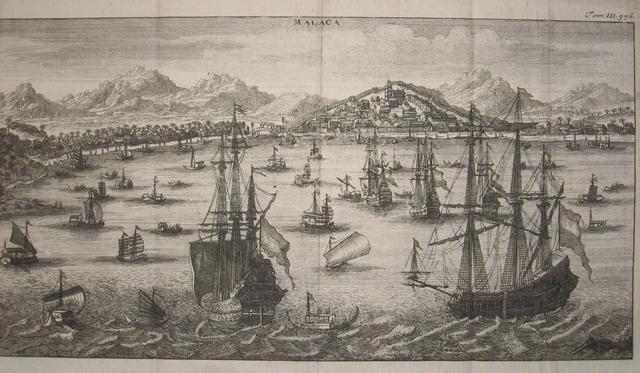
In April 1511, the Portuguese Viceroy of India, Alfonso de Albuquerque, set sail for Malacca with a large fleet and a force of 1,200 men to seek retribution… and with conquest in mind. A bitter battle ensued and Malacca was captured in August 1511. The Sultan and his men were forced to flee Malacca and even until today, Malacca remains one of only two states in the Peninsula which does not have a Sultan.
Albuquerque moved quickly to protect and consolidate his gains. He ordered for a fortress to be built surrounding a hill by the estuary of the Malacca River. He planned for Malacca to serve as a springboard to the Spice Islands and a port linking Portugal’s trade with China. He christened the large stone fortress the A’ Famosa, meaning “The Famous” in Portuguese. For many years, the Portuguese occupied and ruled Malacca.
With the rise of a new seaborne empire in Europe, the Dutch – in their attempt to capture the lucrative Asian spice trade – the United Dutch East India Company (Verenigde Oostindische Compagnie, or VOC) was founded in 1621.
Even before the founding of Batavia as the VOC’s centre in the Far East, there were serious attempts to capture Malacca from the Portuguese to make it a Dutch colony. Under the command of Admiral Cornelis Matelief de Jonge, the third fleet of the VOC, with a flotilla of 11 ships, arrived in the Straits of Malacca in 1606. The Admiral received secret orders to visit the Sultan of Johor to seal an agreement of friendship between the VOC and Johor, as well as for the two nations to co-operate for the conquest of the fortified city of Malacca and the removal of their common enemy – the Portuguese.
A Second Conqueror Arrives
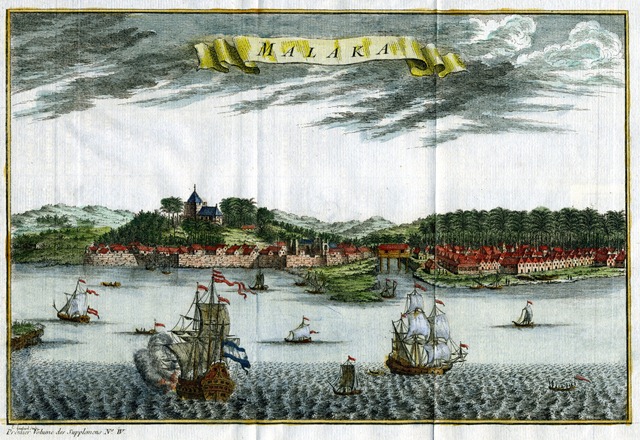
The arrival of the Dutch fleet at Malacca immediately signalled a grave and hostile situation for Portuguese Malacca. However, the Portuguese had by that time turned Malacca into a formidable fort with strong defences.
The Dutch besieged Malacca, hoping to reduce its defences and weaken its people into submission. However, de Jonge received news that an extremely large Portuguese fleet was on its way from Goa to rescue Malacca. The decision was made to break the siege. Quickly reloading and recalling his men, the Admiral turned around only to find himself face to face with a flotilla of over 20 Portuguese ships carrying some 2,000 men, led by the Viceroy of India himself. The two fleets manoeuvred towards Cape Rachado, north of Malacca’s coast, where a fierce sea battle was fought. Realising his mounting losses and insufficient manpower, Admiral de Jonge decided to abandon the fight.
After several failed attempts to claim the port city, the Governor General of the VOC finally decided on an all-out attack for the capture of Malacca from the Portuguese. Working together with Johor, the joint military operations began in June 1640. Dutch ships blockaded the shore of Malacca to cut off supplies and kept a cannonade, while the Johor Malays surrounded the city from the land side.
During a siege that lasted six dreadful months, famine and disease broke out among both the besiegers and the besieged, resulting in many deaths on both sides. Finally, in January 1641, a small band of Dutch soldiers and sailors made a final push and they were able to breach the fort walls and the indomitable A’ Famosa was finally captured.
After the conquest and ouster of the Portuguese, the Dutch focused on rebuilding Malacca and attempted to rejuvenate its trade relations with neighbouring countries. They deliberately encouraged the Chinese to trade at their newly acquired possession. To rebuild the town, the presence of a flourishing society was a necessity. This resulted in the creation of the first plural society in Malaysia consisting of Malays, Chinese, Europeans, Eurasians, and other hybrid communities such as the Baba Nyonyas interacting and living in harmony. Religious tolerance by its communities, which had been instilled since the days of the Malay Sultans, was always pervasive throughout Malacca.
Another Change Of Hands
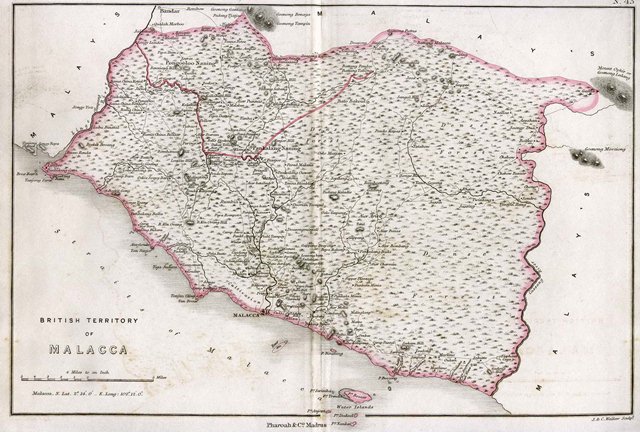
Malacca remained as a Dutch colony. However, due to the Napoleonic Wars, its administration was temporarily taken over and held by the British from 1795 to 1818. It was then that the British gave orders for the fortress of Malacca to be destroyed and the only remnant of the fort that stands is the Old Gateway, which has since become an icon for the historic city.
Far away in Europe, the Anglo-Dutch treaty was signed on 17th March 1824. With the stroke of the pen, Malacca was reassigned to Great Britain in exchange for Bengkulu in Sumatra. The British formally occupied Malacca on 9th April 1825, and the town was placed under the direct authority of the English Bengal Government. The above act caused a political divide, splitting control of the Malay Archipelago into what would eventually be Indonesia for the Dutch and Malaya for the British.
With the establishment of the British port of Singapore in 1819 by Sir Stamford Raffles, Malacca together with Penang and Singapore became incorporated into the British Malayan Straits Settlements in 1826. Malacca’s glorious past was eventually forgotten and the city seemed fated to become a backwater town.
Today, its colourful history and rich heritage is being rediscovered by tourists who travel from near and far. Exploring the old buildings at Jonker and Heeren Streets as well as the Stadthuys and the ancient tombstones in the ruins of the Church on St Paul’s Hill provides the visitor with a small glance of its illustrious six centuries of multicultural history.
Walking along its streets to discover the distinctive architectural influences feels like a detective story. You will need to see and notice the finer things to find those unique cross-cultural bland of Malacca’s past. Meet the people of Malacca, especially the Eurasians, Peranakans, and Chettis, and you will find that they are steeped in culture and well-informed on their area’s history. Even if you have visited Malacca before, it is definitely a worthwhile destination for a second (or third) visit, as you will surely discover that there is more than meets the eye when it comes to this historic city and its people.
Dennis De Witt is the author of several books, including History of the Dutch in Malaysia, Melaka from the Top, and Historical Tombstones and Graves at St Paul’s Hill Malacca.
Homepage Highlight Photo Credit: Davidlohr Bueso, Flickr
Source: Senses of Malaysia March/April 2014
Read More Articles on Melaka:
- Architectural Landmarks in Melaka and Penang
- Marketplace Melaka
- A Street Called Millionaire’s Row in Melaka
What are your thoughts on this article? Let us know by commenting below.No registration needed.




